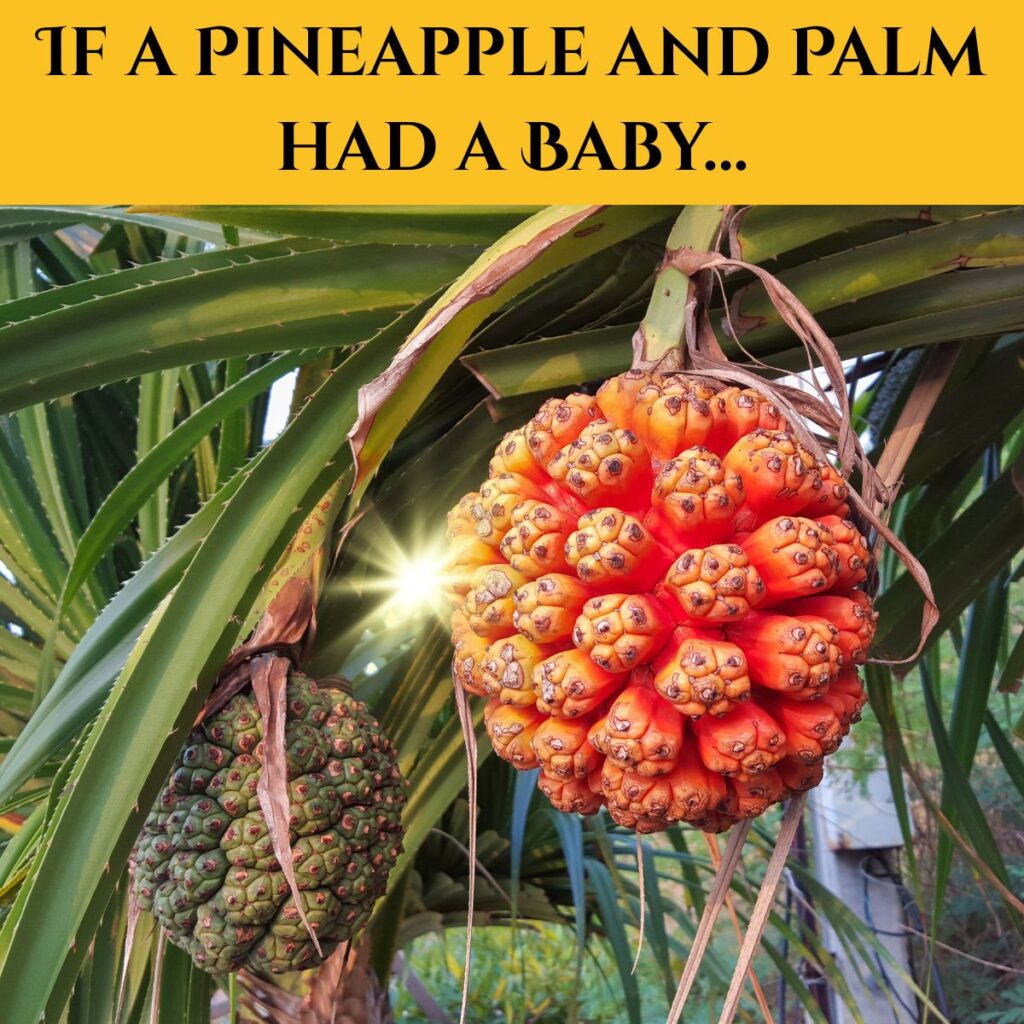With its bizarre, pineapple-like fruit and spiral whorls of spiny leaves, the Screw Pine (aka. Pandan; Pandanus spp.) stands out as a botanical oddity thriving across the world’s tropics, from sun-drenched Pacific islands to the coasts of India and Madagascar.
The Screw Pines are a genus of palm-like monocots that have hundreds of accepted species in the subtropics and tropics.
They are not closely related to true palms, but grow with a wide-branching trunk that has many leaf scars. The strap-shaped leaves are produced in a crown and they produce adventitious roots and fruits that are pineapple-like, with multiple fruits in a globule structure that have prism-like sections.
Although the fruit is eaten by a wide variety of animals, the seeds are mainly dispersed by water, floating from island to island. The Screw Pines are of major importance culturally, economically and for health reasons to the islands of the Pacific.
The uses of the Screw Pines vary by species, but many are sources of food, fiber for basket weaving, shelter, clothing, construction, bedding, rope, handicrafts, medicine, or religious uses.
Fresh Screw Pine leaves are used in Asian and Indian cuisines for the addition of flavor and aroma, and has been referred to as the “vanilla of Asia”.
Several species have edible fruit, which is consumed either raw or cooked. They are often added to sweet dishes, curries, rice dishes and beverages.
The flowers of the Screw Pine are used to make and extract called Kewra (Kevda) which is used as a flavoring in beverages and desserts. The leaves are also used in India to decorate the hair and for their fragrance.
Through scientific investigation Screw Pines have been found to exhibit a wide range of pharmacological activities including antioxidant, anti-inflammatory, antidiabetic, analgesic, antitumor, hepatoprotective, antimicrobial, antidepressant, and hypoglycemic activities, among others.
In traditional medicine, various Pandanus species are used to treat ailments such as headaches, epilepsy, skin diseases, leprosy, rheumatism, wounds, fever, digestive and respiratory issues, and as a fertility regulator, particularly in Ayurvedic and Pacific Island practices. Preparations may include decoctions from the roots for antidiabetic and anti-inflammatory effects, leaves as analgesics for pain relief, and flowers as aphrodisiacs or laxatives; they are also applied to skin for their antibacterial and wound-healing properties. Roots and leaves are valued for both oral and topical remedies in multiple cultures.
One interesting study demonstrated that Pandanus leaf extracts significantly attenuated symptoms of metabolic syndrome and improved obesity-related outcomes in animal models.. Another investigation showed Pandanus fruit extracts can help modulate gut microbiota and reduce high-fat-diet-induced hyperlipidemia.
If a Pineapple and Palm had a Baby…

